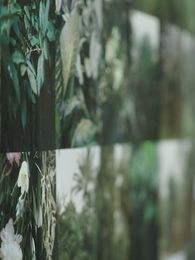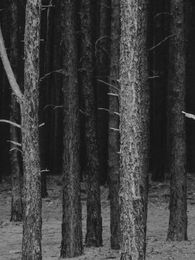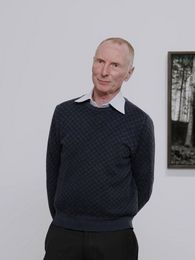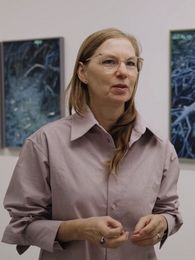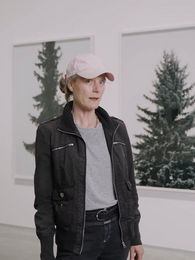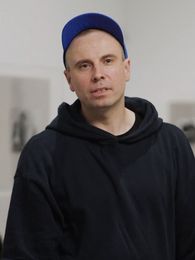Lofty firs, dense mangroves, bizarre pistils – the shapes created by the plant world are prodigious. Embedded within their own complex, highly sensitive ecosystems, plants intertwine with human culture in many different ways. Contemplating them can soothe the nerves, offer food for thought and trigger powerful emotions such as fear or anxiety. Plants have found favour as material for photographic techniques and experiments since the early 19th century. “Greenery: Plants in contemporary photography” takes up this multifaceted theme. It features present-day works, most of them from the museum’s Photography Collection, which examine the often ambivalent relationship between humans and plants through the eye of the camera. The exhibition encourages visitors to respond to their own emotions, to sharpen their environmental awareness and to perceive the harmony between nature and culture.
Artists
Traveling in the tropics with a strong awareness of the mutability around us, Mimi Cherono Ng’ok has an all-encompassing relationship with plant life. Photographing in the Dominican Republic, on the margins of urban settlements and in the gardens and parks of São Paolo and Nairobi, the images of vegetation, presented here like clippings, are snapshots of her personal emotions. Plants generate familiarity and offer solace. 18 different motifs, including palm leaves and banana trees, recur in the grid-like arrangement. The larger-than-life montage feels almost overpowering.
Between 1924 and 1932 the writer and philosopher Ernst Fuhrmann (1886–1956) commissioned over 4,000 images of plants for his steadily growing archive from photographers such as Lotte Jacobi and Fred Koch. He wanted these macrophotographs, by shifting scale and often focusing on detail, to free our gaze for “the essence”, as he noted in 1930 in his book “Die Pflanze als Lebewesen“. Fuhrmann published and exhibited his visual research, encouraging people to see plants as complete living beings in their own right. Financial woes caused the publishing house hosting the picture archive to keep changing its name and company status. For simplicity we refer to it here as Folkwang-Auriga publishing house.
A narrow path opens up between bare coniferous trunks on pale forest earth before vanishing into the darkness. In “Schonung“ (“Clearing”) Falk Haberkorn investigates the ambiguous theme of the forest. As a photographic motif it often symbolises unspoilt nature. Haberkorn, however, plays with the contradiction between romantic reverence and the threat posed to forests by both environmental impacts and commercial interests. The enigmatic quality of the image triggers emotions and evokes memories of fairy tales and Western myths. The artist describes his technique as a “visual interrogation” of “things purportedly plain to see”
Stacked logs, branches propped against trees, scatterings of deadwood and heaps of twigs are traces of forestry management, both profitoriented and sustainable. Europe’s woodlands reflect human ordering in all its diversity. In the Black Forest, Brandenburg and Norway, Ingar Krauss tracks down tensions between sculptural wooden forms and rampant growth. His harmonious compositions, aided by central perspective and a consistent depth of field, pick out the incongruities between human intervention and indomitable nature.
Susanne Kriemann took the photographs for “Mngrv polymersday” (2020) in the Indonesian mangrove forests on Pulau Bintan. Pollution from the ocean has caused waste from civilisation to become entangled in this fragile ecosystem. Each work is in two parts distinguished by the camera perspective and by imprints of plastic waste collected locally. The artist transfers these structures directly by printing them straight onto photographic paper using bunker fuel discharged into the ocean from industrial fishing combined with colour pigment. The involuntary amalgamation of synthetic junk and plant life is depicted as a unity. This work is the result of close exchange with the tourism and research centre at Desa Wisata Pengudang on Pulau Bintan, Indonesia.
Stately treetops in deep green: Stefanie Seufert photographs evergreen confers in parks and front garden against a grey background. It is an ideal motif for her series “01-1 – 1-10”, which pursues multiple meanings and comparisons. Without any spatial or narrative reference points, the tree is reduced by central perspective and close cropping to a form. Seemingly neutralised, it can now be perceived as a functional object, as a sculpture, as a portrait or as “plant life”. Might the series also be read as reflecting documentary typologies and does a single image signal anything more than itself? Stefanie Seufert explores the properties of photography, beginning where pictures defy categorisation.
Andrzej Steinbach created his series “Ashtray and Yoga Mat” (2023) at the invitation of the Berlinische Galerie. He consulted 132 historical photographs of plants, fungi and minerals in the picture archive of Folkwang-Auriga publishing house (1928–1932) and chose the ones that interested him from a pictorial angle. The artist then matched his selection with twenty photographs of consumer goods and everyday objects. Nature and culture are no longer antithetical but connected. We are invited to consider the interplay between things made by human hand and things that have grown naturally. Steinbach has produced a sculptural display to show the historical macrophotographs and his own works.
